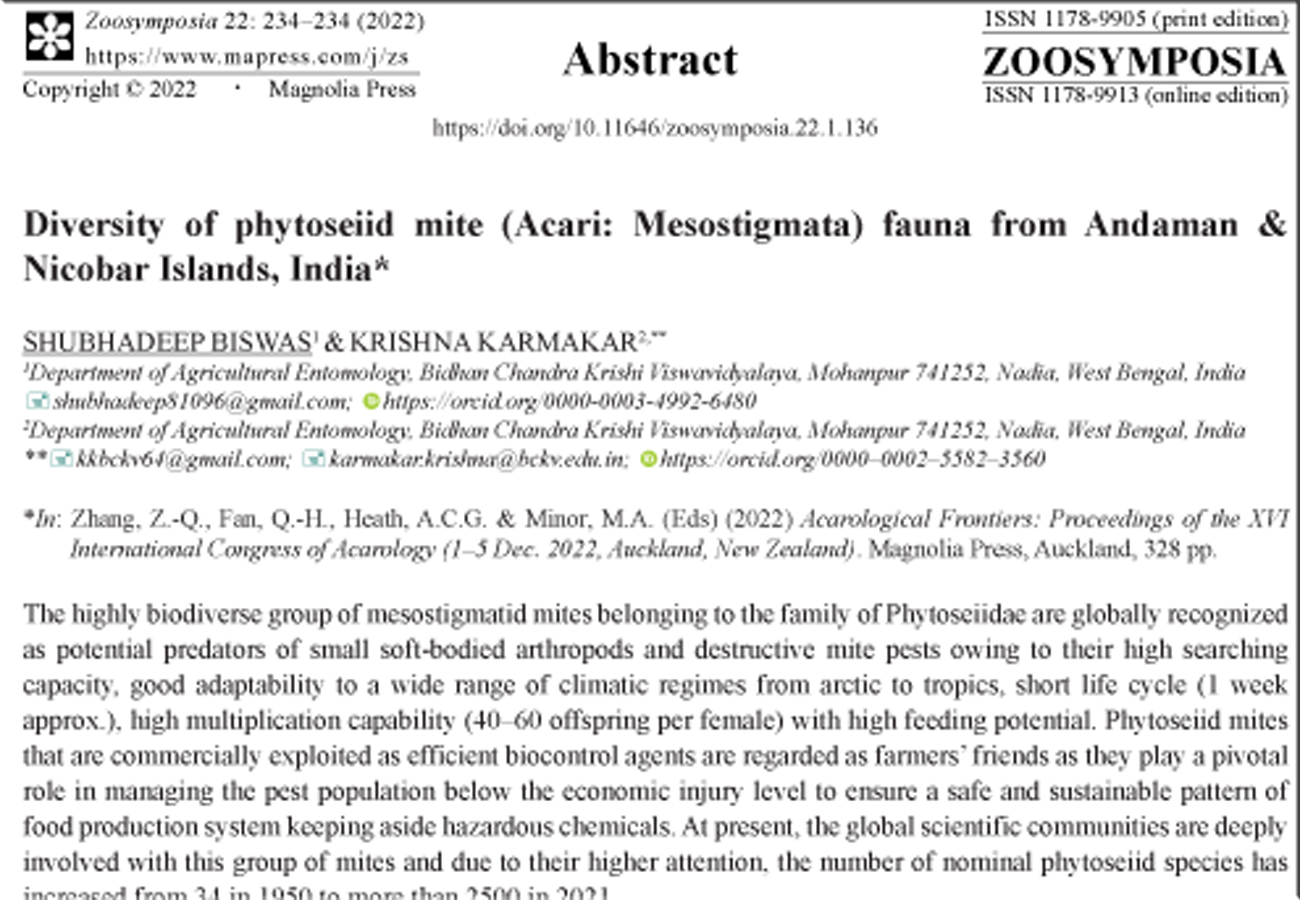Abstract
The highly biodiverse group of mesostigmatid mites belonging to the family of Phytoseiidae are globally recognized as potential predators of small soft-bodied arthropods and destructive mite pests owing to their high searching capacity, good adaptability to a wide range of climatic regimes from arctic to tropics, short life cycle (1 week approx.), high multiplication capability (40–60 offspring per female) with high feeding potential. Phytoseiid mites that are commercially exploited as efficient biocontrol agents are regarded as farmers’ friends as they play a pivotal role in managing the pest population below the economic injury level to ensure a safe and sustainable pattern of food production system keeping aside hazardous chemicals. At present, the global scientific communities are deeply involved with this group of mites and due to their higher attention, the number of nominal phytoseiid species has increased from 34 in 1950 to more than 2500 in 2021.
References
-


